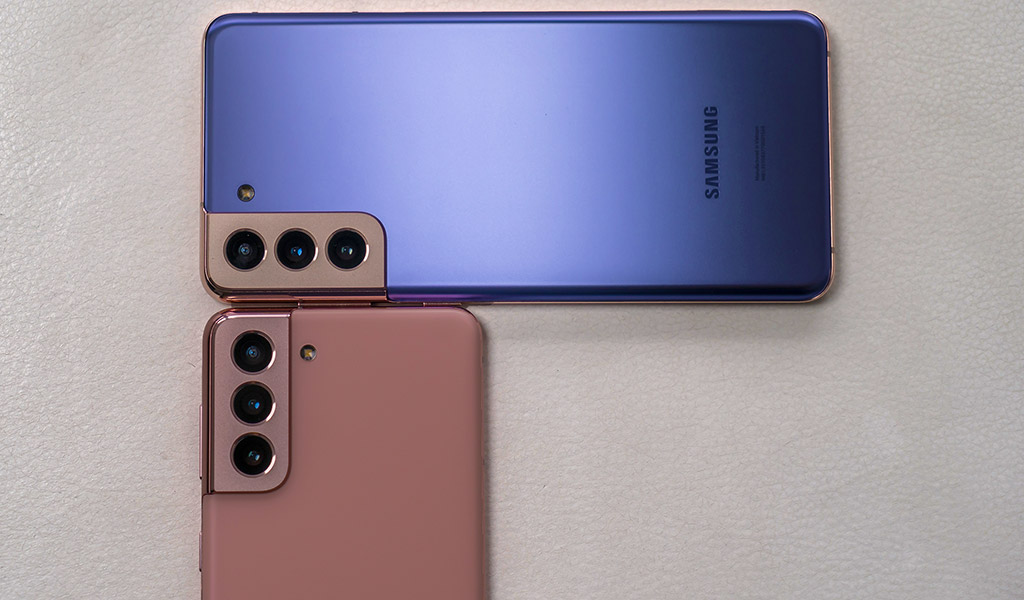
Samsung sticks to a familiar formula with the Galaxy S21 and S21+, and that makes them both predictable and dependable all at once.
This is the third year in a row that Samsung launched three variants of the same model type. Last year’s trio saw distinct differences between the Galaxy S20 Ultra and the Galaxy S21/S21+, only to then follow with yet another in the Galaxy S20 FE. This year, they follow similar lines, except these two are a little further away from the Galaxy S21 Ultra.
Samsung did change a few things, though, and what you end up with are two devices catering to the crowd that’s willing to make some concessions. The gap between these two particular variants, however, isn’t all that significant, and really just comes down to size.
Samsung Galaxy S21+ SpecsDisplay: 6.7-inch 2400 x 1080 Dynamic AMOLED 2X display 20:9 aspect ratio with 394 pixels per inch |
Getting a slight makeover
Samsung likes to try things. That much is obvious when looking at all the designs and features that have come and gone over the years with its mobile devices. The Galaxy S20 lineup wasn’t the company’s aesthetic best, but it was a step in the right direction. I say that primarily because it got away from curved displays and went flat. It continues that trend with these two phones, and they’re definitely better for it. Not only because it’s easier to apply a glass screen protector, but also because it makes them easier to hold and handle.
But I also like the overall design treatments. The matte finish on the back is a perfect complement that gives the phone a nice sheen, while reducing unseemly fingerprints. The camera housing blends in far better with the rest of the back, and does so a little differently from the S21 Ultra. It’s a similar concept, except the bump doesn’t protrude quite as high. It’s the kind of look that doesn’t seem like the camera array is trying to burst out.
On the other side, you get a 6,7-inch Dynamic AMOLED 2X display for the Galaxy S21+, and a 6.2-inch for the S21. These are exactly the same as their predecessors, except for one major change—they both have 120Hz refresh rates. They are adaptive, and in a very smart way, so it’s a feature you will appreciate over time.
But to get there, Samsung had to cut the resolution down. Rather than QHD+ (3200 x 1440), these two have 2400 x 1080 panels. If you used either of the two previous phones, you started out at the same resolution anyway, so if you never changed it, you won’t see a lick of difference here.
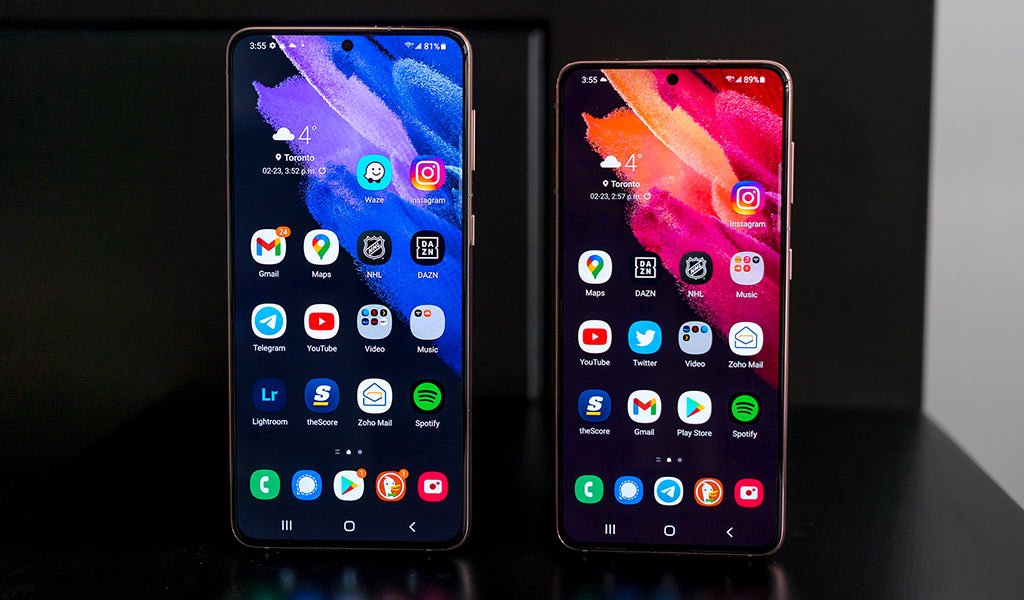
Galaxy S21 and S21+ on the inside
Samsung chose to keep these two close on paper, and for the most part, in performance. They run with the same processor, memory, storage and camera array. Like the S21 Ultra, you can say goodbye to the microSD card slot for storage expansion, leaving you with either 128GB or 256GB to work with.
You won’t have much to complain about pertaining to performance. The Snapdragon 888 is a speedy chipset with more than enough power to handle these phones. Whether it’s a simple task, or something a little more taxing, like gaming or video editing, there’s enough power under the hood to handle it.
That performance also fits in well with the smoother 120Hz adaptive refresh rate, making for two phones that really stand out. There really is no major difference that way between the Galaxy S21 and S21+. The only other aesthetic difference actually refers to the back panel. The Galaxy S21+ has Gorilla Glass Victus protection, whereas the S21 uses the kind of Glasstic material seen in the Galaxy A71 and A51.
Unlike the S21 Ultra, neither of these two support Samsung’s S Pen. You won’t be able to use the stylus and its embedded features here, unfortunately. Whether or not that’s something Samsung could change with a software update is unclear, but also unlikely. One other change is what’s called ultra wideband (UWB), which could grow to become an industry standard for pinpointing location indoors. The Galaxy S21+ has it, while the S21 doesn’t. Samsung’s SmartTags will eventually utilize the technology, but expect to see it move well beyond that going forward.

Performance and software
Samsung should have the 120Hz refresh rate on by default, but to be sure, go to Settings>Display>Motion smoothness and find out. At this stage of the game, Samsung has figured out how to make a phone that can do just about everything smoothly. While neither of these are the S21 Ultra, they’re no less capable in a lot of areas. If you want to do some gaming through Google Stadia or Xbox Game Pass, that’s no problem here.
It’s easy to manage the daily mix of browsing, messaging, social media, streaming, calling, and whatever else. I never experienced anything that slowed down those tasks. Even if I was editing photos or streaming a lot of video, I didn’t come across a problem along the way. That’s not the surprising part because I’ve grown accustomed to it with each iteration. What I’m liking more is that there’s less of a gap between these two and their premium sibling.
But Samsung did cut a few things. I mentioned the screen resolution earlier, and that might be something that bothers you. The lack of S Pen support might be another. You may want the extra camera features to get extra creative. Losing the memory card slot might also be an annoying thing to accept.
If you can get by without those things, you have two phones that perform blissfully, otherwise. Samsung improved its One UI overlay to make it feel like it’s more in line with what makes Android great. There’s still a fair amount of bloat with all the preloaded apps, though several are at least staples you’ll use.
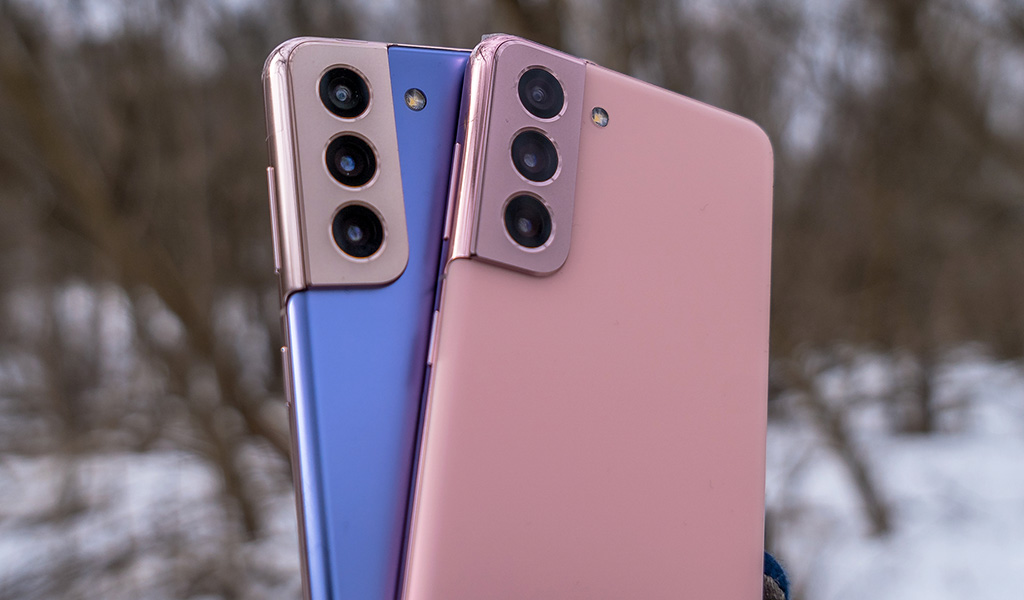
Camera
Both use the exact same camera array, right down to the various software features, so no surprises here. Except they’re also essentially using the same hardware from last year’s duo. The image sensors and lenses are the same, as is most of the software that goes with them. So, what did Samsung really do this time around?
The differences are subtle, but put them together, and they carry a bigger impact. For starters, images have a little more muted colour to them. Samsung tamped down on the saturated look it loved for years, and it’s about time. The colours coming from these two phone cameras are more natural, and serve you better when editing them later. Composition is great most of the time, and your odds improve once you turn off Scene Optimizer. That’s the small button in the camera interface, whose purpose is to try automatically adjusting settings to the scene.
They excel most when conditions are optimal, like daylight or well-lit indoor situations, though have reasonable output elsewhere. Low-light and night shots will vary, and the included Night mode isn’t as good as that of the S21 Ultra, which uses a much larger image sensor. To offer something else, Samsung equipped the telephoto lens with a 64-megapixel sensor that combines a 1.1x optical zoom with a digital crop to create a 3x hybrid zoom. You can go up to 5x, 10x or 30x zoom based on that, albeit with results that degrade the further you go. Still, at 5x and 10x, well-lit shots won’t look bad, especially if you only plan to look and share them on your phone. At 30x, images look awful, and are barely usable, in my opinion.
The menu options are mostly the same, save for Portrait mode taking over for Live Focus, AR Doodle moving into the list, and Director’s View for video. Everything else is back, as it was before, or has since been updated after the Galaxy Note20 and Galaxy S20 FE came out.

Galaxy S20 and S21+ video
You can shoot 4K video at up to 60fps, and you’re likely to get solid footage in good conditions. Low-light and night video is so-so—it really depends on how much ambient light you have to work with. When you turn on the stabilizer mode (hand icon), it reverts to the ultra-wide lens to reduce any jittery footage while shooting.
Good choices like Pro Video mode are back, letting you really get creative when shooting any video clip. If you select the telephoto lens to zoom in while shooting, you also tell the microphone to hone in on that subject. It’s called Zoom-in Mic and you can find it in the settings.
New to these phones is Director’s View, which puts all three rear cameras, plus the front-facing one at your disposal as thumbnails onscreen. Switch between them to change the perspective, or mix it up so that you capture both yourself and the scene all at once. It’s on the gimmicky side, but I can see some creativity coming out of it. You just need to experiment and see what you come up with.
Single Take 2.0 takes the original premise last year and expands it. For example, it lets you now take up to 14 different photos and video clips in one take. Intervals range from five to 15 seconds, and in that time, you get a lot of content. They include a “best” image, plus different variants, including a black and white or filtered version. Video clips also comes from all three cameras, and produce a boomerang effect popular on social media. Again, a little gimmicky, but not without some usefulness.
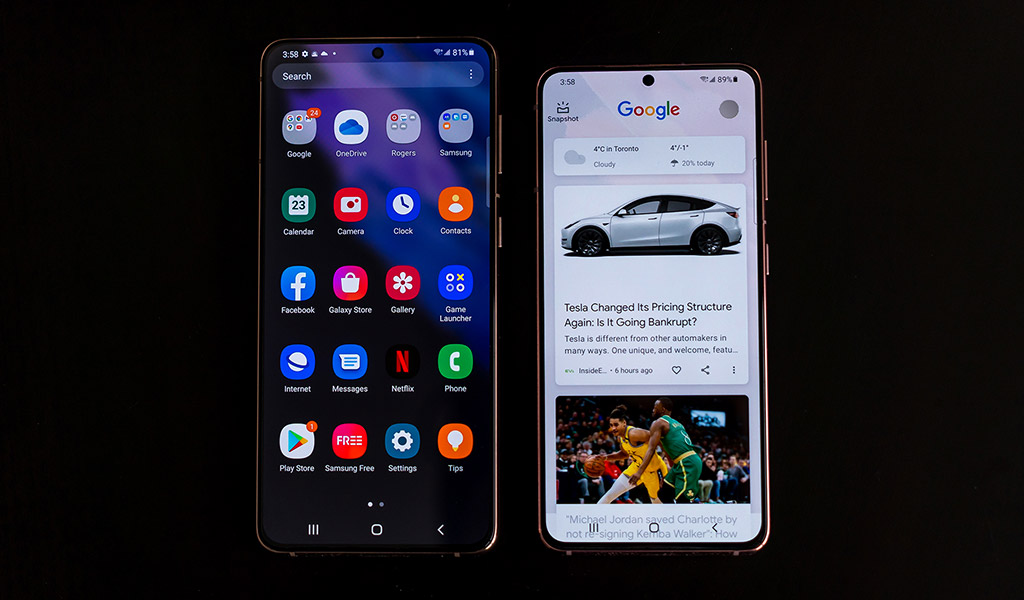
Battery life
Samsung made the divisive decision to not include a power charger in the box with any of the Galaxy S21 models. The USB-C cable is in there, just not an adapter to plug it into. Whether you hate it or not, you can still use a previous charger to step in, if you have one. Any one will do, really, though fast charging benefits most from anything that does 25W or higher. Neither of these phones support 45W charging (nor does the S21 Ultra).
The good news is these hold up well as far as battery life goes. The lower-res screen has a lot to do with it, I’m sure, but so does the smoother software experience and efficient processor. I had little trouble getting through a full day with constant usage.
You also have wireless charging as an option when you need to top up. It maxes out at 15W, but is very convenient when nearby. Lay it on any Qi-enabled charger and you’re good. You can also reverse that by using Wireless PowerShare to charge another device wirelessly through the back of either phone. It’s a slower charge, of course, but good to add some juice to smaller devices, like the Galaxy Buds Pro, for instance. It will work with any earbuds supporting wireless charging.
5G connectivity
Both phones support 5G connectivity, though I really didn’t get to test that out all that much, so can’t say much about the experience. Canada’s major carriers look to step up their respective rollouts, with several municipalities already up and running. They’re spreading it out from the largest cities, so expect it to grow accordingly, depending on where you live.
Final thoughts
What it really comes down to with the Galaxy S21+ and S21 is size. The size of the screen and battery, in particular. Otherwise, they are practically twins, save for a few other design or feature discrepancies. Why Samsung didn’t just merge them together, as I suggested last year, I’m not sure. There must be a market for both sizes because I didn’t see enough to differentiate them.
The good news is being so similar means your experience won’t be radically different either way. They perform very similarly using the same hardware and software. Neither one will take better photos than the other. Battery life is relative to size, but even then, I didn’t see a major edge there on either side. Once you know what you would prefer, you can rest easy.
The Samsung Galaxy S21 5G is available now in phantom grey, phantom white, phantom violet and phantom pink. The Galaxy S21+ 5G is available now in phantom black, phantom silver and phantom violet.




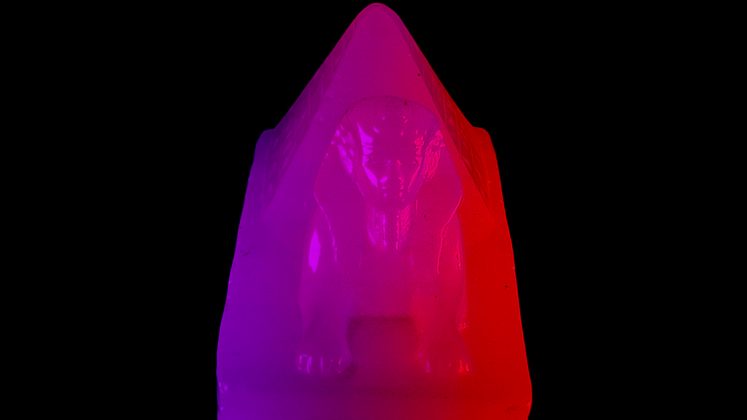









I have S20+ and take lots of pics hiking so think it’s stupid not to have SD Card Slot!!! Why have 8 K video when you can only keep 2 3/4 hrs on base storage and an adapter is too easy to lose!!! Also stupid is the loss of the WQHD+ Screen Resolution Display on the S21+ yes its very noticeable and 120 hz refresh rate to me doesn’t mean much in real life!!! On S21 Ultra stupid that the S Pen doesn’t have a holder and isn’t Bluetooth enabled!!!What a rip off to buy a special holder just for the S Pen!!! Only thing I wish I had was true directors cut!!! Just can have front and back photos at same time!! But other than that save money buy S20+ or Note 20 Ultra cause S21 series gave up too much and S21 Ultra still has some focusing issues
Thanks for your helpful content
Comments are closed.